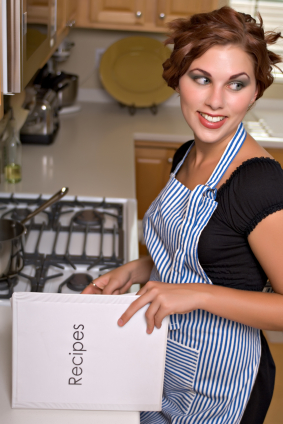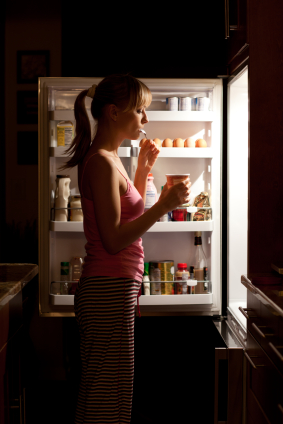Eating at home is one of the key ingredients to maintaining a healthy diet. When you know what’s in your food, you have more control over the amount of calories and the quality of the food you consume. However, with today’s fast paced lifestyles it can be difficult to carve out the time to cook.
Here are eight quick and easy cooking shortcuts for healthy eating.
These tips come straight to you from my personal kitchen!
As a wife, homemaker, fitness coach, and doggie mom I have a limited amount of time I can spend in the kitchen. Here are some shortcuts I use when following my favorite recipes:
1) Use cookers that need no supervision! I use my rice cooker all week long. I make rice, quinoa and steamed vegetables in it. Slow cookers and crock pots serve the same purpose. While one part of the meal is cooking, you can prepare the rest. You can cook stew while you are at work, or run errands while the food is cooking.
2) Use pre-made sauces. I often substitute healthy pre-made sauces in recipes instead of making them from scratch. Organic pasta sauces, dips, and dressings are pretty easy to find in almost every grocery store.
For example, I make lamb burgers that call for a “raita” sauce. The recipe isn’t hard. However, Trader Joe’s sells a yoghurt cilantro sauce that works well in place of it. If you add up the time and cost of buying the ingredients and making the sauce, it is worth the $2.99 I paid for Joe’s version. Just be sure to check labels when buying pre-made sauces. Avoid partially hydrogenated oils and high fructose corn syrup. And be sure you recognize the ingredients!
3) Speed up the veggies! Pre-washed and pre-cut organic vegetables are a great way to save time. Check the frozen section for a great variety as well. Frozen veggies are better than canned because they preserve more of the nutrients without preservatives.
4) Prep well. Do all of your cutting, chopping, and mixing before you start cooking, including a side salad. This will save you time, and your meals will come together seamlessly.
5) Recruit in-house! My husband and I have a lot of fun cooking together. We open a nice bottle of wine, turn on some music and enjoy quality time. The families I work with turn cooking into family time. The kids look forward to working in the kitchen, and mom and dad get to teach their children while getting a little help.
6) Create a meal plan. Plan your meals one week in advance with the groceries in the house. If you have to stop at the store multiple times per week, you will lose a lot of time shopping. And this can tempt you to eat out. If you are not sure how to meal plan, check out Meal Planning Helps You Lose Weight for detailed steps.
7) Have a back up! I always keep a few easy meals in our freezer and pantry just in case the day does not go as planned. Frozen organic pizzas and a fresh salad make a great last minute dinner. By making your own pizza, you have more control over the calories than if you went to the local pizzeria. Dry pasta and minced canned clams make an amazing linguini and clams dish. Add a salad on the side and your family will think it’s gourmet all the way!
8) Buy freeze dried herbs! Did you know freeze dried herbs become “like fresh” when they are moistened? Use these to avoid all of the chopping without sacrificing flavor. They are great in the winter when your herb garden isn’t producing, and it saves having to buy an entire bunch of herbs just for a couple tablespoons!
Please let me know which strategies are the most helpful, or share your own time saving tip below!
Blessings!
Jennifer



